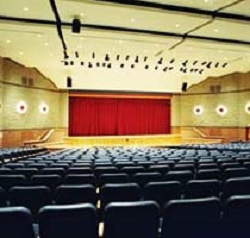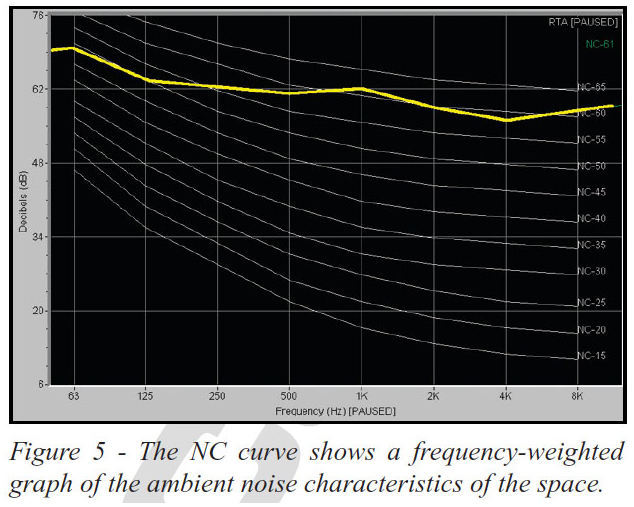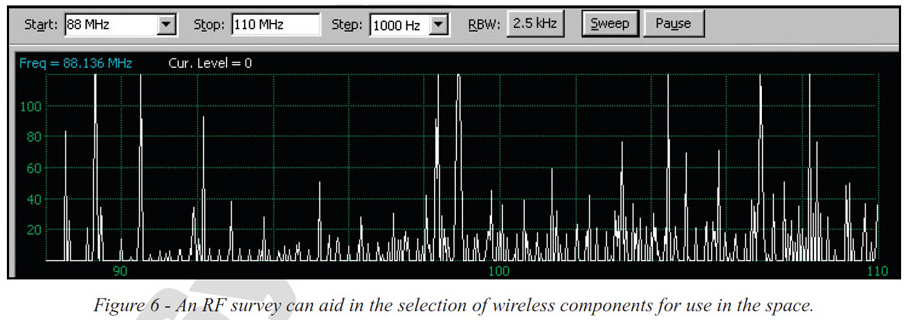
The main offenders regarding noise are usually the HVAC system (heating and air conditioning) and traffic noise. A noise criteria (NC) measurement can show the designer what they are up against.
The noise survey should be done at a number of seating positions and the system designed around the worst one. If the noise is excessive (more than NC 40 for an auditorium) steps should be taken to control it.
This is another good time to bring in a specialist. We recently held a seminar in a meeting space that was NC 61 – a real problem for listeners.
Figure 5 shows a noise criteria survey at a rear seating position in the space.

The Radio Frequency Survey
Here’s one that is often overlooked. The proliferation of wireless products in the audio marketplace makes a radio frequency survey of the site a useful endeavor.
The number of wireless products used in an auditorium tends to escalate with time. The customer starts out with a few wireless lapel mics. The next musical production requires a few more. Eventually the band wants wireless in-ear monitors and so on.
An initial survey of the space will reveal information about the best frequency band to use (VHF or UHF) and how high the quality will need to be (closer spacing of frequencies requires higher quality transmitters and receivers).
The survey can also reveal the optimum placement of receivers – whether they can be at the mix position or must be on stage.

Figure 6 shows a spectrum analysis of the FM radio band in a house-of-worship. This plot will be an invaluable aid to a wireless manufacturer in developing a wireless strategy for the space that doesn’t require the continual replacement of existing components to allow more channels, closer spacing, etc.
A similar study of the UHF band can reveal which one has more available bandwidth that can be used for wireless devices.
Conclusion
A knowledge of the decay characteristics of the space is essential to selecting and placing the appropriate loudspeaker system(s).
The impulse response in its various forms describe these characteristics. The modal response can reveal problem frequencies for a particular space and can aid in the placement of front-of-house equipment as well as reveal the need for room treatment.
A noise survey reveals how much acoustic gain must be designed into the system, and can reveal excessively noisy sources that should be corrected. A radio frequency survey is invaluable for establishing a long-term strategy for the implementation of wireless devices in the space.
The ability to perform and interpret a survey of this type is the mark of a true audio professional. The required time is rewarded by better working designs and a good reputation. A number of instrumentation platforms exist that are cost-effective and widely available.
They include PC-controlled dedicated instruments, hand-held instruments and software applications. Customer confidence increases as less money is wasted on inappropriate equipment for the venue.
Site surveys are a major step in standardizing and formalizing system design practices.
